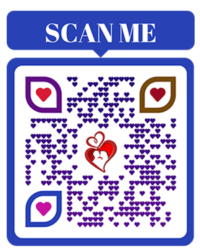For the past 50 years, we’ve been putting love under the microscope.
As psychologists, we’ve studied more than 40,000 couples about to begin couples therapy. We’ve also been happily married to each other for 35 years, so we know a thing or two about successful relationships.
In a lab study, for example, we were able to predict with 94% accuracy whether a marriage would last — after observing the couples for just 15 minutes. One of the biggest determining factors was how often a couple “turned toward” their partner instead of “turning away.”
The happiest couples are savvy enough to notice when their partner is making a bid, and drop what they’re doing, if necessary, to engage.
Here’s an example: Your partner, scrolling their phone, remarks, “Oh, this is an interesting article.” (This is a bid for connection.)
You can respond in one of three ways:
- By turning toward – Acknowledging them and engaging with their attempt to connect: “Oh yeah? What’s it about?”
- By turning away – Actively ignoring or just not noticing their attempt to connect: You keep typing the email you’re working on while staring at your screen.
- By turning against – Irritably or angrily shutting down their attempt to connect: “Can’t you see I’m trying to work?”
The act of turning toward builds affection and a sense of teamwork, which helps strengthen the foundation of a lasting relationship.
Of course, it’s impossible to always turn toward your partner. But in our lab study, the couples who stayed together for at least six years turned toward each other 86% of the time. Those who got divorced only did it 33% of the time.
Turning the wheel a little bit, and then a little bit more, will pay off. Here are three ways to do that:
Pick a time to check in with your partner when you’re able to listen and not rush off anywhere. It can be in the morning, over coffee before work, or in the evening after you’ve put the kids to bed.
Ask them this simple question: “Is there anything you need from me today?”
This allows your partner to reflect on their needs and makes it clear that you want to be there for them. It also gives them hope that if they state what they need, you’ll try to respond affirmatively.
Make a true effort to meet your partner’s needs, whether it’s “I need a break from the kids” or “I’d love to have lunch with you.”
Just as you would pick up a coin or dollar bill if you saw one on the street, think of every potential moment of connection or engagement as something of value, even if it seems small or fleeting. Pennies add up over time!
Just as you would pick up a coin or dollar bill if you saw it on the street, think of every potential moment of connection or engagement as something of value.
Keep an eye out for these invitations to connect:
- Eye contact
- A smile
- A sigh
- A direct ask for your help or attention
- Saying “good morning” or “good night”
- Asking for a favor
- Reading something aloud to you: “Hey, listen to this…”
- Pointing something out: “Look at that!”
- Calling your name from another room
- Seeming sad or down
- Physically carrying something heavy by themselves
- Seeming frustrated
Your emotional availability won’t always align neatly with your partner’s emotional availability. And that’s okay. Here’s how to handle it:
- When your partner makes a bid but you can’t engage – Don’t ignore the request. Just explain, briefly, why you can’t be available: “I’d really love to hear about this, but I have to do [X] right now. Can we talk about it after I finish my meeting?”
- When you make a bid and they don’t respond – If they miss a couple of your bids, just keep trying. But if it’s a pattern, point it out: “I don’t want to be critical, but I’ve been reaching out to you. What’s happening for you right now that is preventing you from responding?” (It might be that they’re busy, stressed or overwhelmed.)
- When a bid is made with negativity – Your partner’s bid can sometimes sound like they’re trying to pick a fight (e.g., “It wouldn’t occur to you to make dinner tonight for once, would it?”). Ignore the negativity and respond to the deeper, hidden bid: “I get that you’re frustrated and tired. I’d be happy to make dinner and give you a break.”
These practices will help you if you’re dating and wondering what’s next, or if you’ve been married for 50 years. All you need is a willingness to try.
![]()

























